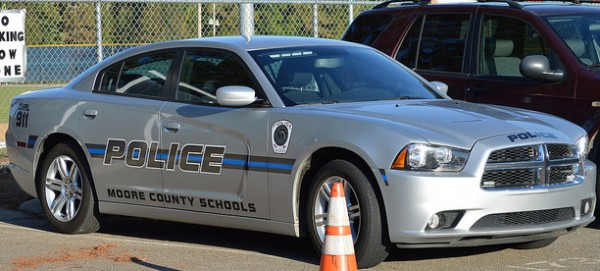
The recent physical altercation between a police officer and a young black female student at Spring Valley High School in South Carolina raised questions about the role of disciplinary sanctions and law enforcement in schools. Since the 1990s, schools, particularly inner-city schools, have become increasingly criminalized, as school officials view students as suspects.
The criminalization of students includes the formalization of punishment through “zero tolerance” policies, the transfer of disciplinary discretion among teachers and school officials to disciplinary codes, and the integration of criminal justice technologies and personnel. Schools often replace traditional modes of school punishment with arrests and court referrals, and control students through security measures like metal detectors and on-campus police officers.
- Paul J. Hirschfield. 2008. “Preparing for Prison: The Criminalization of School Discipline in the USA,” Theoretical Criminology 12(1):79-101.
- Aaron Kupchik. 2010. Homeroom Security: School Discipline in an Age of Fear. New York: New York University Press.
School Resource Officers (SROs), law enforcement officers stationed in a particular school or school district, are a central part of this trend. The number of SROs has increased over the past 12 years, but systematic studies offer no evidence that schools with SROs have better safety records. On the contrary, long-term studies show that more crimes involving drugs and weapons are recorded after schools add SROs. SROs are also associated with higher levels of student arrests for lower-level delinquent acts (e.g., disorderly conduct), suggesting that SROs may bring behavior that was once dealt with by the school (“in house”) into the criminal justice system. This “SRO effect” is exacerbated in schools characterized by higher levels of economic disadvantage.
- Matthew Theriot. 2009. “School Resource Officers and the Criminalization of Student Behavior,” Journal of Criminal Justice 37:280-287.
- Chongmin Na and Denise C. Gottfredson. 2013. “Police Officers in Schools: Effects on School Crime and the Processing of Offending Behaviors,” Justice Quarterly 30(4):619-650.
African Americans and other minority students are affected disproportionately, both because SROs and other criminal justice tools are concentrated in urban schools and because minority students, even when controlling for differential behavior, are punished at higher rates than their white peers. Current research suggests that schools’ rising criminal justice apparatus does little to quell violence, but may unintentionally result in more black students experiencing the “school-to-prison pipeline.”
- Michael Rocque and Raymond Paternoster. 2011. “Understanding the Antecedents of the ‘School-to-Jail’ Link: The Relationship between Race and School Discipline,” The Journal of Criminal Law and Criminology 101(2):633-665.
- Kelly Welch and Allison Payne. 2010. “Racial Threat and Punitive School Discipline,” Social Problems 57(1):25-48.

Comments